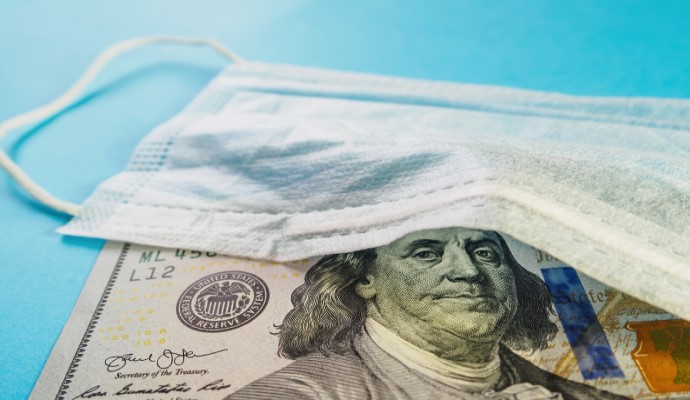Nearly $27B Remains in Provider Relief Fund, Analysis Shows
Many healthcare providers are still waiting on grants from the Provider Relief Fund as the COVID-19 pandemic rages on.

Source: Getty Images
- There are still tens of billions of dollars sitting the Provider Relief Fund, a pool of grants specifically for healthcare providers who have reported or are still experiencing pandemic-related losses and extra costs.
An analysis from the Urban Institute, with support from the Robert Wood Johnson Foundation, determined that the Provider Relief Fund has $26.8 billion of the total $178 billion waiting to be distributed to providers as of October 2021.
Of that unspent money, $7.1 billion is unallocated, meaning HHS has yet to announce how it plans to disburse the funds to healthcare providers. And that pool is likely to grow in the coming months, researchers pointed out, as providers return unspent grants because they cannot meet terms and conditions, including the requirement they spend the funds within a year of receipt. Already, providers have returned $8 billion in grants.
“As the pandemic persists, we now have greatly improved knowledge of how to treat patients with COVID-19 and also a better understanding of how providers have used (or returned) emergency grants,” Teresa A. Coughlin, a senior fellow at the Urban Institute, said in a statement emailed to RevCycleIntelligence.
“Policymakers have an opportunity to consider how best to target the remaining funds in the COVID-19 Provider Relief Fund to [healthcare] providers to support providers who have been hardest hit by the pandemic and continue to have the greatest needs,” Coughlin continued.
Distribution of Provider Relief Fund grants has caused controversy from the start. HHS, through the Health Resources and Services Administration (HRSA), first disbursed the money to healthcare providers in a massive general distribution round based on a provider’s share of total fee-for-service Medicare reimbursements in 2019. The grants were distributed automatically to providers as of April 2020.
The distribution method enabled HHS to deliver much-needed funds to healthcare providers at the start of the COVID-19 pandemic. However, the method disadvantaged many healthcare providers, especially those in dire need of financial support. For example, Medicare Advantage providers, pediatricians, obstetricians, and safety-net providers with disproportionate shares of Medicaid-covered and uninsured patients did not receive as much because of historic Medicare revenue levels, researchers explained.
In total, about $46 billion in Provider Relief Fund grants were distributed as part of this first general distribution round.
Later general distributions used alternative methods, including allocating grants based on a provider’s share of net patient revenue in 2018 or the provider’s most recent complete tax year. Still, the methodology drew industry criticism since safety-net hospitals tend to have lower net patient revenue because of their payer mix, which relies on lower-paying public healthcare programs.
HHS has made some targeted distributions of Provider Relief Fund money, including distributions specifically to hospitals in high-impact areas, safety-net hospitals, rural healthcare facilities, children’s hospitals, Indian Health Care providers, and skilled nursing facilities. The analysis, however, found that these targeted distributions totaled $52.6 billion compared to a total of $93.5 billion from general distributions.
Other distributions also included $10 billion for the treatment and testing for uninsured patients and vaccine administration, $10 billion for vaccine and therapeutic development and procurement, and $6 billion for nursing home infection control, quality, and performance.
“Despite the many different distributions, concerns persist about how fund grants have been allocated,” researchers elaborated.
Research has shown that healthcare providers who cared for some of the populations hit hardest by the pandemic have not received any Provider Relief Fund grants. Additionally, funds have largely been channeled to hospitals with strong financial standing, including funds disbursed via targeted distributions.
Lawmakers have raised concerns that wealthier hospitals have used the grant money to fund mergers and acquisitions as a way to recover from pandemic-related losses, rather than paying for patient care or maintaining operations.
Researchers anticipate more issues with Provider Relief Fund distribution to arise as the pandemic persists.
“The pandemic is not over. Indeed, some have called COVID-19 the ‘forever virus,’ with many hospitals across the country still dealing with surging COVID-19 caseloads,” the analysis concluded. “Policymakers must accordingly consider how best to support providers and the health care system over the long term to mitigate current losses from the pandemic and prepare for the next phase of the pandemic with the sizable amount of remaining provider relief funding.”
